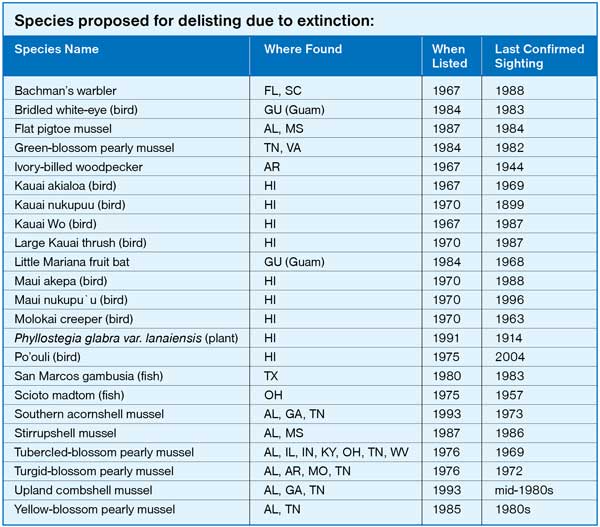23 species deemed extinct are eyed for delisting from ESA
WASHINGTON D.C.—The U.S. Fish and Wildlife Service is proposing to remove 23 species from the Endangered Species Act, including two from Guam—the Bridled white-eye and little Mariana fruit bat—as they are now considered extinct.
Based on rigorous reviews of the best available science for each of these species, the USFWS has determined these species are extinct, and thus no longer require listing under the ESA.
The purpose of the ESA is to protect and recover imperiled species and the ecosystems upon which they depend. For the species proposed for delisting, the protections of the ESA came too late, with most either extinct, functionally extinct, or in steep decline at the timing of listing.
“With climate change and natural area loss pushing more and more species to the brink, now is the time to lift up proactive, collaborative, and innovative efforts to save America’s wildlife. The Endangered Species Act has been incredibly effective at preventing species from going extinct and has also inspired action to conserve at-risk species and their habitat before they need to be listed as endangered or threatened,” said Interior Secretary Deb Haaland. “We will continue to ensure that states, Tribes, private landowners, and federal agencies have the tools they need to conserve America’s biodiversity and natural heritage.”
These species extinctions highlight the importance of the ESA and efforts to conserve species before declines become irreversible. The circumstances of each also underscore how human activity can drive species decline and extinction, by contributing to habitat loss, overuse and the introduction of invasive species and disease. The growing impacts of climate change are anticipated to further exacerbate these threats and their interactions. They also underscore ongoing conservation challenges of the Service. Almost 3 billion birds have been lost in North America since 1970. These extinctions highlight the need to take action to prevent further losses.
Stemming this extinction crisis is a central component of the Biden-Harris administration’s America the Beautiful initiative, a locally led and voluntary, nationwide effort to conserve, connect, and restore 30 percent of lands and waters by 2030. One of the initiative’s goals is to enhance wildlife habitat and improve biodiversity—to keep species from reaching the point where they are in danger of extinction or are too far gone to save.
“The Service is actively engaged with diverse partners across the country to prevent further extinctions, recover listed species and prevent the need for federal protections in the first place,” said Martha Williams, USFWS principal deputy director. “The Endangered Species Act has been incredibly successful at both preventing extinctions and at inspiring the diverse partnerships needed to meet our growing 21st century conservation challenges.”
While protections were provided too late for these 23 species, the ESA has been successful at preventing the extinction of more than 99% of species listed. In total, 54 species have been delisted from the ESA due to recovery, and another 56 species have been downlisted from endangered to threatened. The Service’s current workplan includes planned actions that encompass 60 species for potential downlisting or delisting due to successful recovery efforts.
Species being proposed for delisting include the ivory-billed woodpecker, Bachman’s warbler, two species of freshwater fishes, eight species of Southeastern freshwater mussels and 11 species from Hawaii and the Pacific Islands.
The USFWS seeks information, data, and comments from the public regarding this proposal to remove these 23 species from the ESA and declare them extinct. The proposed rule is available in the Federal Register Reading Room at https://www.federalregister.gov/public-inspection using the link found under the Fish and Wildlife Service Endangered and Threatened Wildlife and Plants section.
We will accept comments received or postmarked on or before Dec.r 29, 2021. Comments submitted electronically using the Federal eRulemaking Portal must be received by 11:59pm Eastern Time on the closing date. (PR)
























